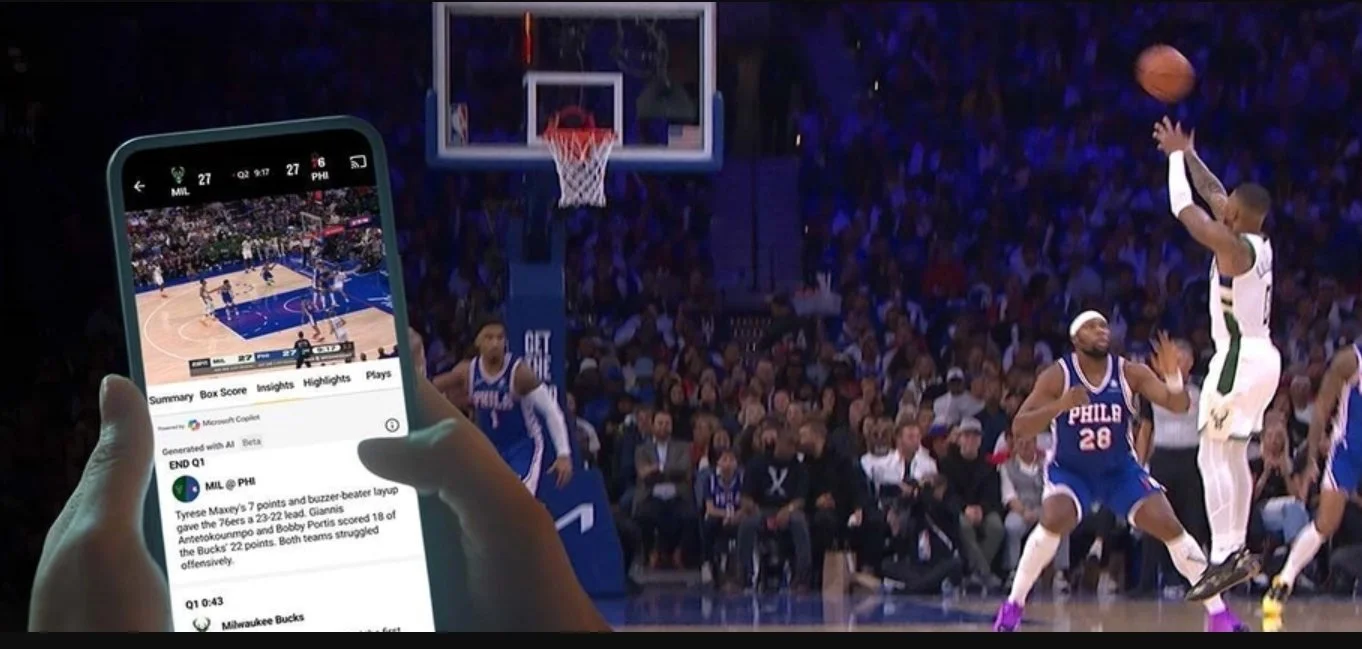For decades, the NBA was known primarily as a basketball league — an engine for entertainment and athletic excellence that grew into a global brand. But in 2025, it’s becoming clear that the league’s next phase isn’t just about basketball. It’s about becoming a technology and media powerhouse.
From Basketball League to Tech Ecosystem
At the NBA’s annual Technology Summit — a fixture of All-Star Weekend — the league often showcases playful, futuristic demos: robotic shooting coaches for Steph Curry or AI assistants for Victor Wembanyama. Behind the humor, though, lies a serious message. The NBA increasingly views itself as a hybrid of a sports, media, and technology company.
This shift isn’t about abandoning the game — it’s about deepening it. The league now oversees everything from data-driven production to AI-enhanced fan experiences. It’s investing directly in tech startups, building proprietary platforms, and developing internal engineering teams that look more like Silicon Valley labs than sports offices.
Building Tech DNA Into the League’s Core
Commissioner Adam Silver has made it clear that AI and advanced analytics will define the next generation of the NBA’s operations. The league’s 2023 partnership with Sony Hawk-Eye now tracks players using 29 body data points at 60 frames per second — technology that informs officiating, player health, and even future coaching tools.
The NBA’s in-house “Basketball R&D” division now employs engineers from autonomous vehicle and big tech backgrounds to develop autonomous officiating systems. While these tools currently focus on goaltending and basket interference calls, the long-term vision points toward AI-powered decision-making embedded throughout the game.
AI Beyond the Court
The NBA isn’t stopping at gameplay. Its front office is rethinking how fans experience basketball altogether. Through AI-driven media streams, adaptive broadcasts, and machine-translated commentary, the league is testing how to personalize the global viewing experience at scale. Soon, fans in different countries could watch games voiced naturally in their own language — powered entirely by AI.
These moves stem from the NBA’s direct-to-consumer push that began with the 2022 revamp of the NBA App. The app became more than a streaming platform — it’s now a digital hub for highlights, youth games, and original content. That effort forced the NBA to evolve its tech infrastructure and led to deeper collaborations with companies like Amazon to process vast data sets and refine fan insights.
Investing in Innovation
NBA Investments and its incubator, NBA Launchpad, are strategic vehicles designed to identify startups aligned with the league’s goals — from performance analytics and AR/VR fan engagement to international youth development. These initiatives echo a growing trend across global sports: leagues positioning themselves as innovation accelerators.
As Christopher Benyarko, the NBA’s EVP of Direct-to-Consumer, put it, the league can no longer “rely on others to drive innovation.” Instead, it’s taking ownership of how technology shapes the fan and player experience.
Measuring the Future of Fan Emotion
Even fan reactions are becoming part of the NBA’s data strategy. The league has experimented with physiological testing — tracking heart rate and skin response to different game moments — to measure emotional engagement. This blend of neuroscience and entertainment analytics could eventually guide everything from game rules to broadcast pacing.
The Bigger Picture
What the NBA is building represents a model for how modern sports organizations can evolve. It’s not just about AI for operations or marketing — it’s about integrating technology into the DNA of the sport itself.
At Sports Tech Atlanta, this mirrors what we’re seeing across the ecosystem: sports properties becoming innovation platforms. As the NBA redefines itself as a global tech and media brand, it sets the standard for how leagues can use AI, data, and digital ecosystems to expand fandom, unlock new revenue, and ultimately shape the future of sport.

